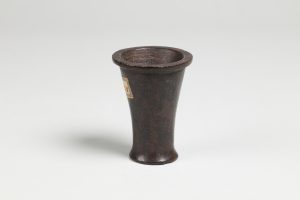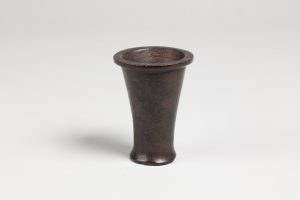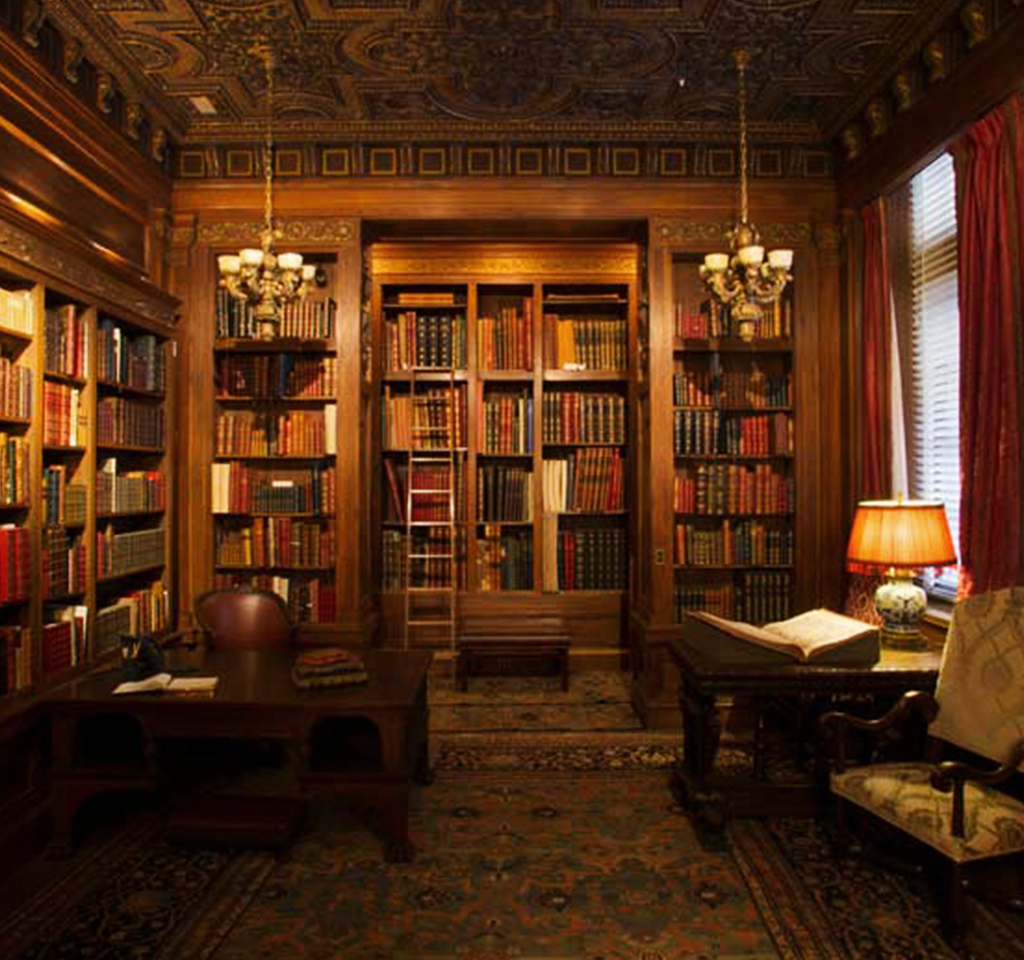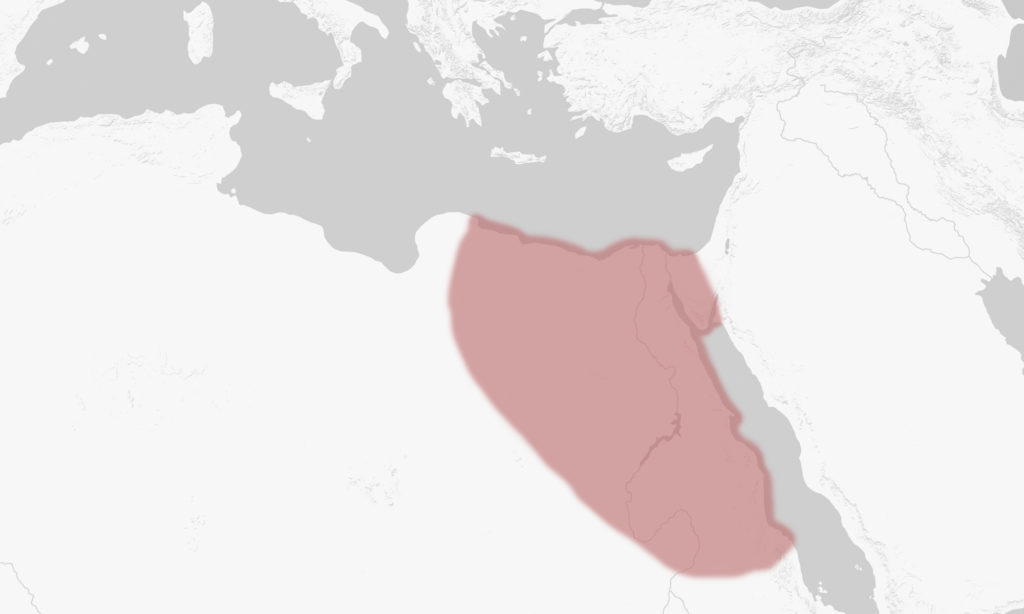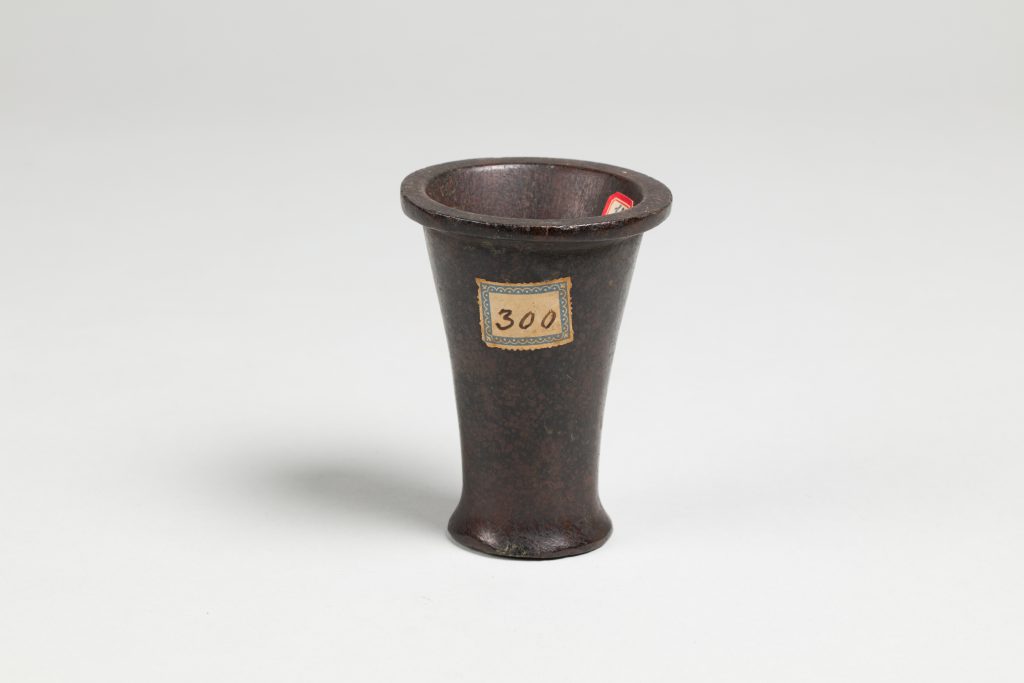
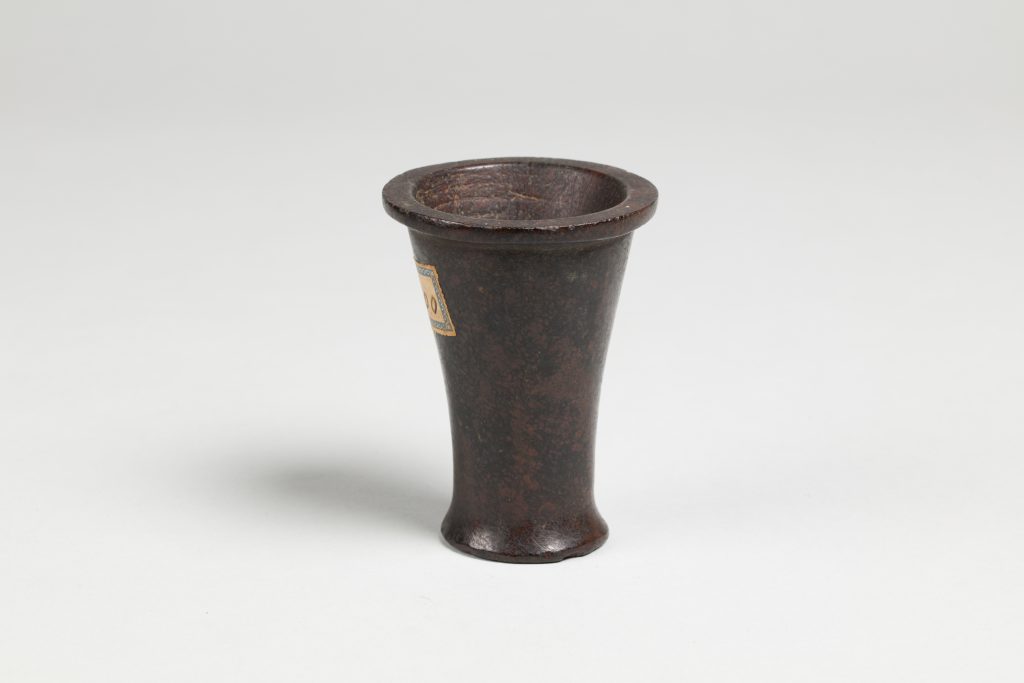
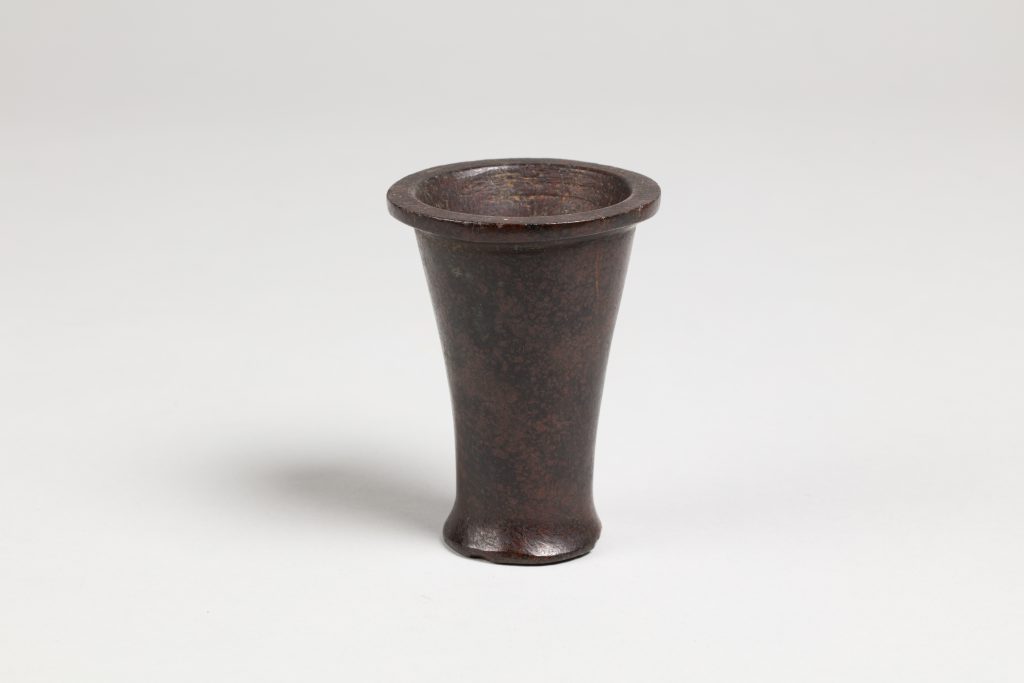
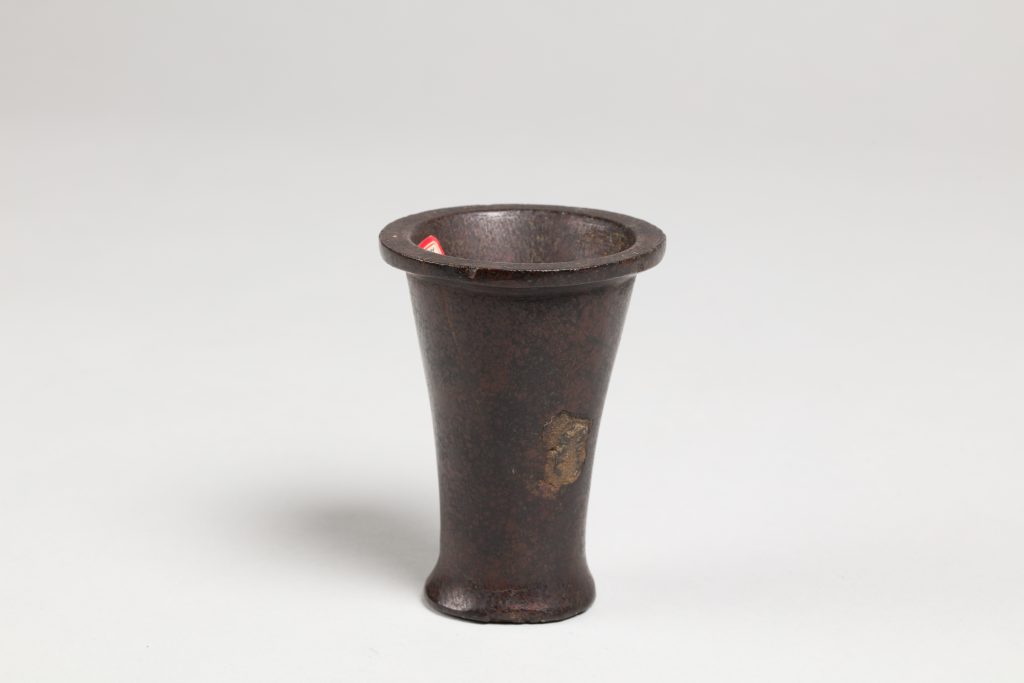
Gift of Miss Susan Dwight Bliss
1963.268Small jars like this which flare from the base to a wide opening were common in Egyptian culture for several millennia with little change in form. They were used to store various ointments and were deposited in tombs of the elite. Originally, the jar would have had a simple stone lid and may have been sealed with the use of clay or wax. Given the consistency in form and the absence of data from excavations, it is difficult to date such jars with precision. Shifts in the materials used for stone vessels are one way of providing some chronology; in this case the basalt material was in use from the Pre-Dynastic period (4000–3000 BCE) through the end of the Old Kingdom (2700–2200 BCE).
This vessel is one of a group of stone vessels donated to the Museum by Susan Dwight Bliss (1882–1966). Bliss was the sole heir of the magnificent Manhattan mansion belonging to her parents, wealthy financier George T. and Jeanette Dwight Bliss. During the Gilded Age, the couple (especially Jeanette) were avid American antiquarians. They collected Mediterranean antiquities and European art, amassed a sizable library, and even installed a series of historic interiors in their uptown mansion.
Egyptian antiquity captivated the public imagination on either side of the Atlantic since Napoleon’s campaigns in the region (1798–1801). Large contingents of scientists and scholars accompanied Napoleon’s campaigns, studying the cultures, languages, and histories of the region and excavating many ancient Egyptian sites. Their discoveries, which included the Rosetta stone, were published in lavishly illustrated volumes. Excavations of Egyptian tombs increased throughout the nineteenth century in the wake of this campaign. Among the later excavations, perhaps most famous was the discovery of Tutankhamun’s tomb by the English archaeologist Howard Carter in 1922. Tomb contents regularly found their way into the hands of Western collectors and museums, either as part of legitimate partage agreements or through looting and the antiquities market.
Before 1963, Bliss family collection; 1963, gifted to the Bowdoin College Museum of Art by Susan Dwight Bliss
Collector
Sole heir to wealthy financier George T. (1816–1901) and Jeanette Dwight Bliss (1852–1924), Susan Dwight Bliss was a New York collector and philanthropist. She inherited a sizeable collection of ancient Mediterranean and historic European art from her parents, prominent collectors of the Gilded Age, and continued to collect rare books, manuscripts, and historic art and artifacts herself.

